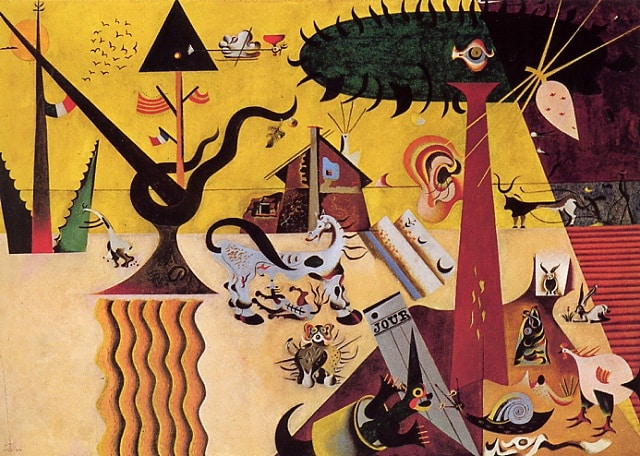The Surrealistic Art of Transcendence: Why Does Abstract Art Comfort Us?

“Color is the keyboard, the eyes are the harmonies, the soul is the piano with many strings. The artist is the hand that plays, touching one key or another, to cause vibrations in the soul.” – Wassily Kandinsky
People tend to think of their taste in art as being basically static; if one is a strict devotee of realism, one is not likely to wake up one day and find one’s self enamoured of the bright swirls of a Kandinsky painting, for example, or the nonsensical landscapes of Dali.
This is, however, as erroneous as the common belief that our basic personality traits are inherent and immutable; emerging research shows that we can, in fact, profoundly change our minds where art is concerned—but it usually takes some trying circumstances to bring about this alteration. According to recent studies, we are more likely to relate to surrealistic art if we have recently been forced to confront our mortality.
While the idea of finding comfort in art (and the feelings of transcendence it provides) in the presence of existential threats is nothing new—sacred artworks have been crafted since the dawn of civilization to provoke such sensations—this new research is demonstrating that the same benefits may be garnered from purely secular works as well. Surrealistic art in particular appears to be highly effective for this purpose.
A group of researchers led by psychologist Verena Graupmann of DePaul University, which has extensively investigated the aforementioned phenomenon, explains that the unsettling nature of such works is, strangely, what creates the comforting feeling of transcendence. Through gazing upon such works, people may move their thinking away from long-held fears and limitations, and create in place of these fears a more far-reaching sense of meaning. This process results in the viewer entering a dream-like state not dissimilar to their unconscious stream of thoughts; it is the entry into this state which results in the sensation of meaning.
The DePaul University team is far from being alone in their findings; in the European Journal of Social Psychology, Graupmann and her colleagues provided recounts of two experiments that confirmed the impact of surrealistic art on those seeking meaning.
One experiment featured 87 undergraduates at a major German university; half were instructed to describe their feelings as they contemplated their own deaths, and also to write down what they believed would happen to them during the process of dying. The other half were asked similar questions, but about entirely different subject matter (dental pain).
All of the subjects were then bade to view two images—a realistic painting by Edward Hopper, and a surrealistic one by Vladimir Kush. The undergraduates were then surveyed regarding the exact emotions each painting produced in them, particularly anxiety, consolation, reassurance, and encouragement.
All of the students who had been discussing dental pain found both paintings similarly reassuring; for those who had been contemplating their own death, on the other hand, the surrealistic painting proved to be far more reassuring. The researchers believe that this confirms the theory that surrealistic art, despite being difficult to fathom on a surface level, taps into a deeper state of reassurance than realistic art does.
The second study featured in the European Journal of Social Psychology went beyond subjective observation, using functional MRI technology to assess what was occurring within the brains of 15 German volunteers as they viewed the same amount of both realistic and surrealistic paintings. Prior to viewing these works of art, they were asked to look at pairs of words grouped into several themes: death, disgust, or neutral. (According to Terror Management Theory, we experience a deep emotional link between disgust and death, as disgust is generally focused on organic subject matter, which reminds us of our own mortality.)
The researchers discovered that different patterns of brain activity occurred in the volunteers who had been made to contemplate death or disgust (versus those who had been exposed to neutral word pairings) when they viewed surrealistic art. Neural stimulation in the precuneus and the medial prefrontal cortex—areas of the brain believed to be responsible for “self-referential processing”—increased considerably. This, of course, indicated the study subjects were thoughtfully reflecting on these “strange” paintings.
Ergo, the researchers concluded that, by tapping into the dream-like realm of our unconscious, surrealistic art provokes feelings of meaning, but only when the viewer has already been engaging in serious contemplation—such as when an individual is confronted with the idea of his or her own mortality.
This research may prove helpful in providing end of life therapy in hospitals and nursing homes, environments where people frequently find themselves contemplating death. The surrealistic works of Salvador Dali et al. may instill a reassuring sense of meaning in these individuals which had previously proven elusive.